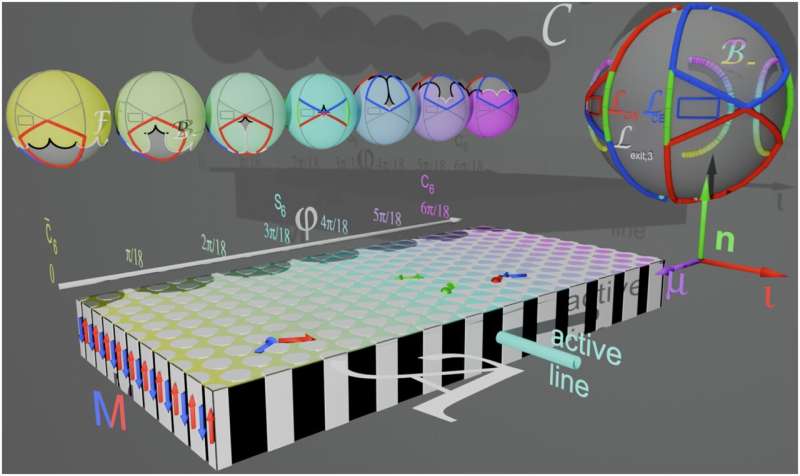
JULY 19, 2024 by Anja-Maria Meister, Bayreuth University
Collected at: https://phys.org/news/2024-07-microscopic-factory-small-runners-method.html
Researchers at the University of Bayreuth have developed a new method for controlling the growth of physical micro-runners. They used an external magnetic field to assemble paramagnetic colloidal spheres—i.e. only magnetic due to external influences—into rods of a certain length. Colloidal particles are tiny particles in the micro- or nanometer range that can be used in medicine as carriers of biochemicals.
These so-called microscopic bipeds change their behavior of their own accord as soon as they are fully grown: They then decide to run away. No external intervention is necessary for this. Nevertheless, their behavior is not random, but follows the experimenters’ plan.
The research results have been published in Nature Communications. In this work, Jonas Elschner, Farzaneh Farrokhzad, Prof. Dr. Daniel de las Heras and Prof. Dr. Thomas Fischer from the Department of Experimental Physics at the University of Bayreuth have developed a microscopic factory for small runners: a biped factory.
There, microspheres are connected to make bipeds by means of magnetic forces and leave the factory as soon as they are fully grown.
This is achieved by means of a magnetic metamorphosis pattern of oppositely magnetized domains that are arranged differently depending on their position. Paramagnetic microspheres are placed on the pattern and an external time-dependent magnetic loop is applied to the system.Play
This is chosen so that the particles move for one or more spatial periods during a temporal period. With a suitably designed loop, different particles can even be transported in different directions so that they meet and combine to form rods of different lengths. As soon as these have grown to the desired length, they leave the factory independently and run across the pattern as bipeds.
In experiments, the group was able to use this system to produce bipeds of six different lengths.
The results are the result of a collaboration between the University of Bayreuth, the University of Kassel and the Polish Academy of Sciences.
More information: Jonas Elschner et al, Topologically controlled synthesis of active colloidal bipeds, Nature Communications (2024). DOI: 10.1038/s41467-024-50023-7
Journal information: Nature Communications

Leave a Reply